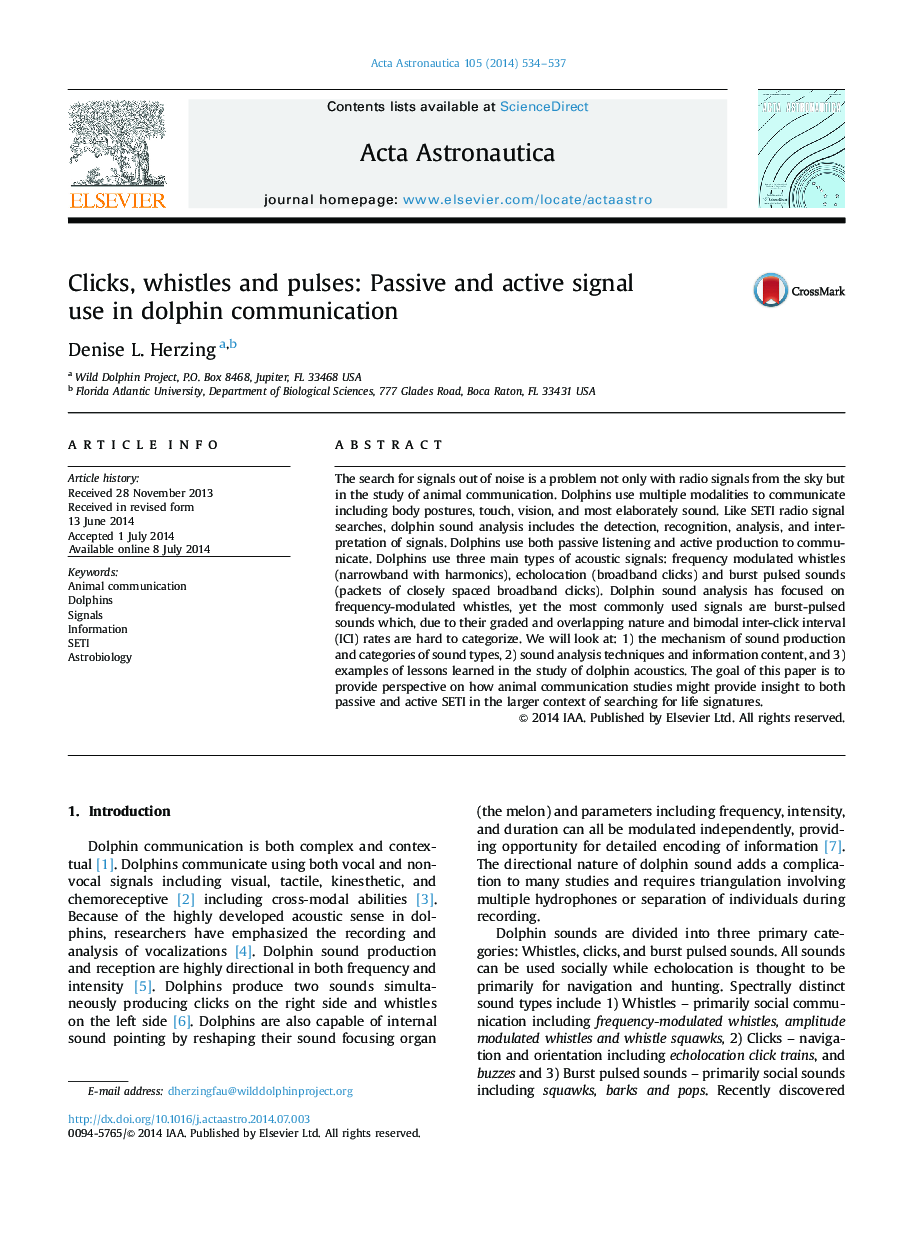| Article ID | Journal | Published Year | Pages | File Type |
|---|---|---|---|---|
| 10680760 | Acta Astronautica | 2014 | 4 Pages |
Abstract
The search for signals out of noise is a problem not only with radio signals from the sky but in the study of animal communication. Dolphins use multiple modalities to communicate including body postures, touch, vision, and most elaborately sound. Like SETI radio signal searches, dolphin sound analysis includes the detection, recognition, analysis, and interpretation of signals. Dolphins use both passive listening and active production to communicate. Dolphins use three main types of acoustic signals: frequency modulated whistles (narrowband with harmonics), echolocation (broadband clicks) and burst pulsed sounds (packets of closely spaced broadband clicks). Dolphin sound analysis has focused on frequency-modulated whistles, yet the most commonly used signals are burst-pulsed sounds which, due to their graded and overlapping nature and bimodal inter-click interval (ICI) rates are hard to categorize. We will look at: 1) the mechanism of sound production and categories of sound types, 2) sound analysis techniques and information content, and 3) examples of lessons learned in the study of dolphin acoustics. The goal of this paper is to provide perspective on how animal communication studies might provide insight to both passive and active SETI in the larger context of searching for life signatures.
Related Topics
Physical Sciences and Engineering
Engineering
Aerospace Engineering
Authors
Denise L. Herzing,
